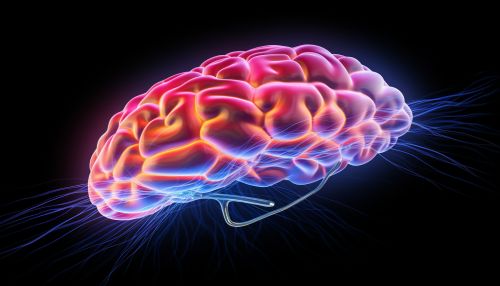Temporal lobes
Anatomy and Structure
The temporal lobes are two of the four major lobes of the cerebral cortex in the brain of mammals. They are situated at the bottom section of the brain and are involved in processing sensory input into derived meanings for the appropriate retention of visual memories, language comprehension, and emotion association.


The temporal lobes are divided into several gyri or ridges, the superior temporal gyrus, the middle temporal gyrus, and the inferior temporal gyrus, each associated with different aspects of cognitive function. The superior temporal gyrus contains the primary auditory cortex, which is responsible for the processing of sounds. Specific sound frequencies are processed in specific regions of this gyrus.
Functions
The temporal lobes play a crucial role in processing sensory data and attaching emotional resonance to this data. They are involved in the primary organization of sensory input. The temporal lobes are not only involved in processing the sensory data but also in storing it as long-term memory.
Auditory Processing
The primary auditory cortex, located in the superior temporal gyrus, is responsible for the processing of auditory stimuli. It receives sensory information such as different sound frequencies from the ears via the auditory pathways. The processed auditory stimuli are then interpreted in the Wernicke's area, a region in the temporal lobe involved in language comprehension.
Visual Perception
The inferior temporal gyrus is involved in the processing and recognition of visual stimuli. This gyrus contains the ventral stream of the visual system, also known as the "what pathway" because it is involved in recognizing what objects are. Damage to this area can result in an inability to recognize objects, a condition known as visual agnosia.
Language Comprehension
The left temporal lobe, specifically the Wernicke's area, is primarily responsible for the comprehension of language. Damage to this area can result in language deficits, such as Wernicke's aphasia, a condition characterized by fluent but nonsensical speech and difficulty understanding spoken or written language.
Memory
The medial temporal lobes are crucial for the formation of long-term memory. The hippocampus, located in the medial temporal lobe, is particularly important for the formation of new memories and the retrieval of old ones. Damage to the hippocampus can result in severe memory deficits.
Clinical Significance
Damage to the temporal lobes can result in a variety of neurological and psychological conditions.
Temporal Lobe Epilepsy
Temporal lobe epilepsy is a chronic neurological condition characterized by recurrent seizures in the temporal lobe. These seizures can result in a variety of symptoms, including sensory changes, such as auditory or visual hallucinations, and impairment of consciousness.
Wernicke's Aphasia
Damage to the Wernicke's area in the left temporal lobe can result in Wernicke's aphasia, a condition characterized by fluent but nonsensical speech and difficulty understanding spoken or written language.
Kluver-Bucy Syndrome
Kluver-Bucy syndrome is a rare condition that can occur following damage to the anterior part of the temporal lobes. It is characterized by hyperphagia (excessive eating), hypersexuality, and a lack of fear response.
